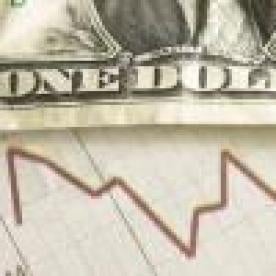How much would you pay to lend someone your money?
Confused by the question? Wondering if it is perhaps miswritten? Or alternatively, if not, then how could such a scenario ever be considered?
I will repeat the question: What percentage of your money would you pay for the right to invest your money safely in a losing venture, ultimately lowering your principal a little bit each day?
You are not alone if you rebuke and scoff at such a premise, believing that no one would participate in such a senseless scheme. However, the unthinkable—the unimaginable—has happened, and monetary experts and economic theorists are perplexed. For the first time in history, the world is experiencing the phenomenon of widespread, sustained negative interest rates.
According to one expert, Douglas E. Johnston, Jr., a global banking and business advisor, negative interest rates, “[on] the surface. . .represent a confusing and counterintuitive ‘new math,’ which can be difficult to grasp. Stated plainly, at least $2.2 trillion of European bond investors are now paying for the guaranteed right to lose principal, and to receive back less than they have invested.”
Johnston says the “new monetary regime” could take hold in the United States, affecting both the massive American banking corporations as well as the local community banks. The result would create a significant incentive on banks to lend money to businesses and would likely inspire people and businesses alike to borrow and spend rather than save.
“The idea is that this will encourage economic activity by creating an incentive for people to spend their money before it loses value,” wrote New York-based financial analyst Richard Barrington. “Also, negative interest rates discourage people from investing in the country [i.e. Denmark, Switzerland, Sweden, Germany, Austria, Netherlands] that offers them, causing the currency to lose value. That may sound like a bad thing, but a cheaper currency makes a country's prices more competitive against foreign competition.”
So why not just stockpile cash?
Well, you could, but many people don’t feel safe or accustomed to hording cash under the mattress or even in safety deposit boxes. As our society and currencies have grown increasingly computerized and intangible, the idea of cash money has strangely faded. What was once the steadfast preventative to the negative interest rate phenomenon has not yet overcome the downward shift, as was expected.
Herein lies experts’ resistance to fully embracing negative interest rates.
“In economic theory, negative yields shouldn't last very long because investors would reasonably decide to put their money in cash rather than lose money on their investments. However, these are not normal times, and negative yields have spread,” wrote Kathy A. Jones of the Charles Schwab Center for Financial Research.
Another expert suggests banning cash altogether in order to boost the effects of negative interest rates and to support the centralized banks’ and governments’ efforts to manipulate the economic climate. Citigroup’s chief economist, Willem Hendrik Buiter, says that if you abolish, or at least tax, the use of cash and other currencies, then there will be no easy way to hide from negative interest rates, forcing investors to move their money.
If cash is abolished or taxed, there will no longer be an “effective lower bound” (ELB) for interest rates. Traditionally, the ELB has been zero because of the existence of a bearer instrument known as cash. Eliminate that, and you eliminate the ELB. Eliminate the ELB, and governments and central banks have no bounds on how low they can drive interest rates into negative territory, essentially charging people and businesses for saving their money rather than spending it or investing it in riskier ventures like the stock market, real estate, or commodities.
That’s only one situation experts are worried about though.
Another foreseeable, and rather futuristic, form of currency/commodity that could factor into this rather bizarre equation is cryptocurrencies, most notably bitcoins. An abstract and esoteric new approach to internet-based economics, bitcoins are controversial and volatile. (Additional explanation and discussion on bitcoins can be found at What the #!$% is Bitcoin and Court-Appointed Experts: The Future of Litigation? respectively).
“This highly unusual scene seems to tell us that at least some sophisticated institutions are perhaps embracing the loss of some principal by investing with various sovereign governments, rather than face the loss of even more principal by making other types of investments,” Johnston explained.
Nonetheless, how long can investors tolerate watching their savings get taken with no possible reward or return? How long can negative interest rates linger, and can this trend spread to the U.S.? If it does, will massive litigation await?
“It is the final tool in the war on savings and wealth in order to spur the Keynesian goal of increasing ‘aggregate demand.’ If savers won’t spend their money, the government will take it from them,” wrote economist and University of Wisconsin lecturer Patrick Barron in January. “I predict that the Fed will start charging negative interest rates on bank reserve accounts, which will ripple through the markets and result in negative interest rates on savings at banks.”
This would be caused by the rising value of the U.S. dollar, which occurs, in part, as a result of the negative interest rates imposed by the European Central Bank (ECB) and a half-dozen or so countries and which will force the Federal Reserve to impose this historical measure, according to Barron.
“Our exporters will scream that they can’t sell goods overseas, due to the stronger dollar. So, what is the Fed’s option? Follow the lead of Switzerland and Denmark and impose negative interest rates in order to drive down the foreign exchange rate of the dollar,” Barron explained.
This rationale is expressly used by the ECB itself in its explanation of why it introduced negative interest rates in the first place:
“Like most central banks, the ECB influences inflation by setting interest rates. If the central bank wants to act against too high inflation, it generally increases interest rates, making it more expensive to borrow and more attractive to save. By contrast, if it wants to counter too low inflation, it reduces interest rates,” the ECB states on its website. “A central bank's core business is making it more or less attractive for households and businesses to save or borrow, but this is not done in the spirit of punishment or reward. By reducing interest rates and thus making it less attractive for people to save and more attractive to borrow, the central bank encourages people to spend money or invest.”
Some experts are not convinced.
This decision, of course, does not affect just ECB investors and Europeans. In today’s global economy, the decision to institute negative interest rates has had worldwide implications. What’s next for the U.S. is what has experts spinning and guessing.
University of Michigan economics professor Miles Kimball is a bit more optimistic about the future of negative interest rates.
“Talk of ‘currency wars’ is mostly silly. If all countries [establish] expansionary monetary policy, that is a global monetary expansion, not a currency war,” he said in an interview with CoinTelegraph. “Of course, monetary expansions have an effect on exchange rates, but if another country is not happy with that effect on its exchange rate, it should just match with its own appropriately calibrated monetary expansion. That response is not a response in a ‘currency war’; it is normal monetary policy.
“And being able to [implement] negative interest rates makes it possible to nip recessions in the bud. . . .I think that eventually, most central banks will indeed put negative (and positive) paper currency interest rates in their toolkit.”
Notice, however, Kimball’s use of “mostly” when he refers to discussions of currency wars being “mostly silly.” This hint of doubt on Kimball’s part is widespread for other economic and financial experts.
While these expert opinions shed some light on the uncertainty of negative interest rates, implementation of such rates may very well succeed in the U.S. Even so, many experts seem hesitant to embrace such change—and for good reason.




 i
i

